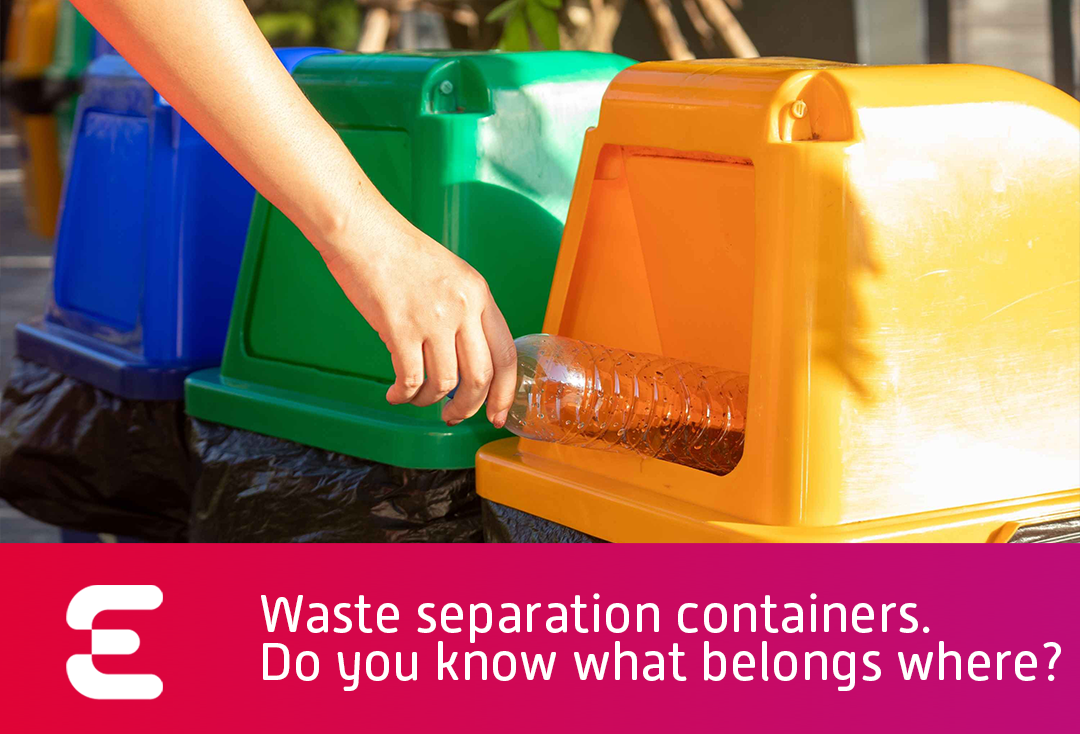Waste separation containers. Do you know what belongs where?
Although waste separation begins at home, it continues outside it. It is therefore important to know the correct color designation of the containers to which each type of waste is attached. By throwing waste in the wrong container, you also devalue other people’s efforts to sort waste.
Be careful what you throw into the containers
Disposing of sorted waste in the wrong waste container can very quickly lead to the entire volume of the waste container being unsuitable for recycling. If 45% of the contents of the sorted waste container are unsuitable, the entire contents are practically unusable.
It follows that the contents of the container go to landfill instead of to the collection of secondary raw materials or to compost, which of course the municipality will pass on to the increase in fees. Therefore, the mere fact that you sort correctly does not necessarily mean that your sorted waste is recycled. It is therefore essential that we all take on social responsibility when dealing with waste.
Yellow container
The yellow container includes plastics and all plastics. These include PET bottles, yogurt jars, shampoo containers, plastic bags, microtone bags, even polystyrene, or tetrapacks, if the municipality does not have an orange container designed specifically for them. However, care must be taken with plastic food packaging. They are heavily soiled and polystyrene is soaked in oil. These do not belong to plastics in the same way as cables, tires, or rubber.
Blue container
This color includes paper and newspapers, magazines, books, notebooks, as well as cardboard, flyers, and paper covers. But again, only clean. Beware of the common mistake made with pizza packaging. Also, due to oil contamination, they do not belong in a paper container, but in mixed waste.
Green container
Container for sorting glass. Non-returnable beverage containers, glass bottles made of cosmetics, but also broken glass containers or sheet glass. Be careful, not everything that can be broken is glass and belongs in a green container. For example, porcelain and ceramics go to mixed waste.
Brown container
Today, he has discovered in virtually all cities, even those that have so far used the opportunity not to sort biodegradable and kitchen waste. These include leftovers from the kitchen, fruits, vegetables, coffee, tea bags and the like. Caution, it is not intended for meat and oils. As this waste spoils quickly, a sealable bio-waste container or sorted waste container will help you a lot. You throw them in the right container after the whole day.
Red container
Designed for metals and aluminum packaging. These include cans, cans and tetrapack packaging. However, metals are not contaminated, for example from chemicals.
Please read before disposing of the waste
The color coding of the containers is a kind of basis. On the other hand, municipalities can adapt containers for sorted waste. For example, the red container is missing in many villages. Then metal lids, cans, and the like are usually added to the plastics container in addition to the plastics. The specific content that belongs to the container is always clearly marked or listed on specific containers. It’s good to read it.
Intelligent waste collection saves
Waste sorting is not just about trying to improve the environment. With an intelligent waste collection, every citizen or municipality will know how much waste has been separated and how much has been removed. The ESONA system will ensure the correct setting of the waste fee. Citizens will thus be motivated not only by the environment but also by their own wallets to sort waste.
It is even possible to directly monitor and track the dumps of containers and bags marked with a QR code or RFID chip in a mobile application or on a computer. In this way, every citizen will be able to improve their personal waste management, thus improving their budget.

